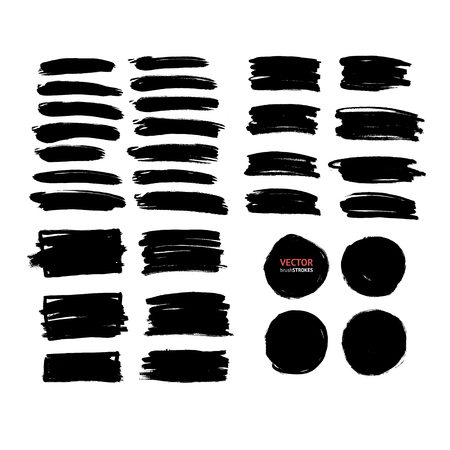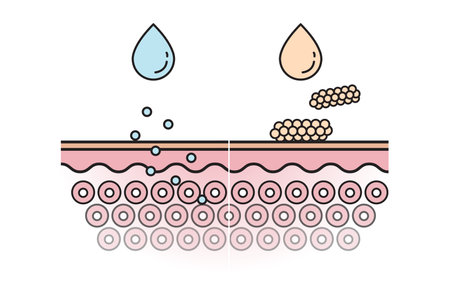Understanding Eye Creams & Serums
When shopping for eye creams and serums in major British retailers, it’s essential to first understand the fundamental differences between these two product types. Eye creams are typically richer, offering a hydrating barrier to lock in moisture and support the thin, sensitive skin around the eyes. In contrast, eye serums have lightweight, fast-absorbing formulas packed with concentrated active ingredients, designed to penetrate deeper layers of the skin for targeted results.
Key Active Ingredients
British shoppers will often notice that popular eye products feature ingredients such as hyaluronic acid for hydration, retinol for smoothing fine lines, vitamin C for brightening dark circles, and peptides for boosting skin firmness. Ingredients like caffeine are also common, helping to reduce puffiness—a concern particularly prevalent in the UK’s often unpredictable climate and busy lifestyles.
Targeting Delicate Eye Area Concerns
The skin around your eyes is up to ten times thinner than the rest of your face, making it more vulnerable to dryness, irritation, and early signs of ageing. Eye creams are best for those needing lasting moisture or extra nourishment—ideal during harsh British winters. Serums are suited for targeting specific issues like crow’s feet or persistent dark circles. Many products available in high street stores such as Boots or John Lewis cater specifically to these needs, allowing you to select formulas tailored to your unique eye area concerns.
Cultural Considerations
In the UK, consumers value both efficacy and gentle formulations due to an increased awareness of sensitive skin and allergies. Opting for fragrance-free or dermatologist-tested options can help minimise the risk of irritation, ensuring your eye care routine is both effective and comfortable for everyday British life.
2. Identifying Your Eye Area Concerns
Before you step foot in Boots, Superdrug, or John Lewis, it’s crucial to understand exactly what your eye area needs. British skincare aisles are brimming with options, but a targeted approach will help you make the most informed choice. Assess your concerns at home first—this way, you’ll avoid impulse purchases and select products that truly benefit your skin.
Assessing Your Personal Eye Concerns
The skin around your eyes is thin and delicate, making it prone to specific issues. Whether you’re battling dark circles from late nights on the Tube or puffiness after too many cups of builder’s tea, pinpointing your primary concern is step one in an effective routine.
Common Eye Area Concerns & Their Causes
| Concern | Possible Causes | What to Look for in Products |
|---|---|---|
| Dark Circles | Lack of sleep, genetics, dehydration, allergies | Brightening ingredients like Vitamin C or niacinamide |
| Puffiness | Fluid retention, high salt intake, lack of sleep, allergies | Caffeine, cooling gels, lightweight serums |
| Fine Lines & Wrinkles | Aging, sun exposure, repeated facial movements | Peptides, retinol (gentle formulas), hyaluronic acid |
| Dryness/Dehydration | Cold British winters, central heating, harsh cleansers | Ceramides, squalane, hydrating creams with minimal fragrance |
Top Tip: Take a moment each morning to inspect your eye area in natural light—this helps you spot subtle changes and adjust your choices accordingly.
By clearly identifying which issue is most prominent for you—be it classic under-eye circles after a long London commute or fine lines accentuated by brisk UK weather—you’ll be able to shop more efficiently across British retailers and invest only in what your skin genuinely needs.

3. Navigating Major British Retailers
When shopping for eye creams and serums in the UK, understanding the landscape of major high street retailers can make your experience smoother and more successful. Boots, Superdrug, and John Lewis are iconic names, each offering a distinctive in-store culture and product range that reflects British preferences and values.
Boots: The British Skincare Staple
Boots is a household name across the UK, celebrated for its wide selection of skincare products, including both high-street favourites and premium brands. In most Boots stores, youll find a dedicated skincare aisle where eye creams and serums are clearly categorised by skin concern (e.g., anti-ageing, hydration, sensitivity). Testers are often available, allowing you to try textures before you buy. Staff are generally trained to offer basic advice but don’t hesitate to ask for ingredient details or recommendations tailored to your needs.
Superdrug: Trend-Driven and Affordable
If youre looking for trend-led brands or budget-friendly options, Superdrug is your go-to. Their stores tend to prioritise new launches and cruelty-free or vegan formulas—a nod to growing UK consumer interest in ethical beauty. Eye care products are usually grouped together with clear labelling for key ingredients like hyaluronic acid or vitamin C. Superdrug also frequently runs promotions, so keep an eye out for multi-buy deals or loyalty discounts at the till.
John Lewis: Premium Service & Curated Selections
For those seeking a more premium experience, John Lewis offers a carefully curated beauty hall with luxury and specialist skincare ranges. The in-store environment is typically calm, with consultants on hand to provide bespoke advice and product demonstrations. Sampling is encouraged, especially if you’re considering investment pieces from brands like Estée Lauder or Clinique. Don’t be shy about requesting ingredient lists or discussing any sensitivities—staff here are usually knowledgeable about formulation differences and can guide you towards the best match for your skin concerns.
The Unique British Shopping Experience
Across these retailers, expect a friendly yet understated approach; British service is generally polite but never pushy. Many stores also offer click-and-collect services—a popular choice in the UK if you prefer browsing online but picking up in person. By getting familiar with each retailer’s strengths, from Boots’ unbeatable range to John Lewis’ expert consultations, you’ll be well-equipped to make confident choices when shopping for your next eye cream or serum.
4. Decoding British Product Labelling and Regulations
When shopping for eye creams and serums in major British retailers, understanding product labelling is essential for making informed choices. UK cosmetic packaging follows strict regulations designed to protect consumers and ensure transparency. Here’s how you can navigate the labels with confidence.
Understanding Ingredient Terminology
British cosmetics often use both INCI (International Nomenclature of Cosmetic Ingredients) names and plain English descriptions. For example, “Aqua” refers to water, while “Retinol” may also be listed as “Vitamin A.” Recognising these terms will help you identify active ingredients and potential allergens more easily. It’s also common for British brands to highlight hero ingredients like hyaluronic acid, niacinamide, or peptides on the front of the packaging, but always check the full ingredient list on the back for a complete picture.
Common Ingredient Terms on UK Labels
| INCI Name | Plain English | Function |
|---|---|---|
| Aqua | Water | Solvent/Base |
| Glycerin | Glycerin | Humectant/Moisturiser |
| Sodium Hyaluronate | Hyaluronic Acid | Hydration/Plumping |
| Retinol | Vitamin A | Smoothing/Anti-ageing |
Expiry Dates and Period After Opening (PAO)
Unlike some regions, the UK doesn’t always require a visible expiry date unless the product has a shelf life of less than 30 months. Instead, look for the PAO symbol: an open jar icon with a number (e.g., 6M or 12M), indicating how many months the product remains safe after opening. This is crucial for eye products, as using expired formulas near your eyes can increase irritation risks.
Labelling Symbols You Might See
| Symbol | Meaning |
|---|---|
| Open Jar (e.g., 6M) | Period After Opening (months) |
| Hourglass/Egg Timer | Date of Minimum Durability/Expiry Date |
British Standards for Cosmetic Claims
The UK enforces specific guidelines regarding marketing claims such as “hypoallergenic,” “dermatologically tested,” or “clinically proven.” Brands must substantiate these claims with evidence—so if you see bold statements about reducing wrinkles or brightening under-eyes, there should be data to support them. Look out for references to clinical trials, consumer testing panels, or endorsements from reputable UK skin experts or dermatologists. If a claim seems vague or exaggerated without backup, it’s wise to approach with caution.
Your Takeaway When Shopping in Britain
Navigating British eye cream and serum labels becomes much easier once you’re familiar with these standards. Always scan ingredient lists carefully, understand what symbols mean, and don’t be swayed by unsubstantiated claims. This mindful approach ensures you get products that are effective, safe, and well-suited to your needs within the UK market.
5. Ingredient Spotlights: What Works and What to Avoid
When shopping for eye creams and serums in major British retailers like Boots, Superdrug, or John Lewis, it’s essential to know which ingredients can truly benefit the delicate under-eye area—and which ones might be best left on the shelf. Here’s a breakdown of some popular actives commonly found in UK eye products, along with a few ingredients that may not suit sensitive skin types.
Top Performers in British Eye Care
Hyaluronic Acid
A favourite across the UK, hyaluronic acid is prized for its ability to draw moisture into the skin, helping to plump fine lines and reduce dryness. Look for this ingredient if you’re after a hydrated and refreshed look—it works beautifully in most climates, including the often unpredictable British weather.
Vitamin C
Vitamin C remains a top pick for brightening dark circles and evening out skin tone. Many eye serums in Britain include stabilised forms like sodium ascorbyl phosphate or ascorbic acid. These can help boost radiance, but those with sensitive skin should patch test first, as vitamin C can sometimes cause mild irritation.
Peptides
Peptides are small proteins that signal your skin to produce more collagen—ideal for firming up the under-eye area and softening crow’s feet. They’re gentle enough for most skin types, making them a wise choice for British shoppers seeking anti-ageing benefits without harsh side effects.
Ingredients to Approach with Caution
Retinol (Vitamin A)
While retinol is an effective anti-ageing ingredient, it can be too potent for the thin under-eye skin, especially if you have sensitive or reactive skin. If you wish to use retinol, opt for lower concentrations specifically formulated for eyes, or consider milder alternatives like bakuchiol.
Fragrance & Essential Oils
British brands sometimes add fragrance or essential oils (like lavender or citrus) to their formulas for a pleasant scent. However, these can trigger irritation or allergies around the eyes—particularly problematic during pollen-heavy seasons in the UK. Fragrance-free options are often best if you’re prone to sensitivity.
Alcohol Denat.
Certain “quick-dry” formulas contain denatured alcohol, which may give a lightweight feel but can dry out or irritate delicate skin over time. Check the INCI list and avoid if you experience tightness or stinging after application.
Final Tip: Always Patch Test
The British market offers a wide range of options, so take advantage of testers where available—apply a small amount behind your ear or on your jawline before committing to full use around your eyes. This simple step can help prevent unwanted reactions and ensure your chosen product works harmoniously with your unique skin needs.
6. Maximising Value: Offers, Samples, and Loyalty Programmes
Making the most of your budget when shopping for eye creams and serums in British retailers is all about being savvy with the deals on offer. Here’s how you can stretch your pounds further while discovering what works best for your skin.
Take Advantage of Promotions
Major retailers like Boots, Superdrug, John Lewis, and Marks & Spencer frequently run offers such as ‘3 for 2’, percentage discounts, or multi-buy deals across skincare ranges. Keep an eye out for seasonal sales—especially around Christmas, Black Friday, and mid-year events—when premium brands often participate. Signing up to retailer newsletters is a smart move; you’ll be first to know about flash deals and exclusive online-only discounts.
Try Before You Commit: Samples and Trial Sizes
If you’re unsure which formula suits your delicate eye area, ask for samples at beauty counters in department stores such as Selfridges or Fenwick. Many brands also offer mini or travel sizes—these are perfect for patch testing at home without splurging on full-sized products. Some retailers even include deluxe samples with online orders or as part of ‘gift with purchase’ promotions, so keep an eye on their websites or social media channels.
Loyalty Schemes: Collect Points and Rewards
British shoppers love a good loyalty card. Boots Advantage Card and Superdrug Health & Beautycard both let you collect points on every purchase, redeemable for future discounts—making them essential if you regularly invest in skincare. Other department stores may have their own rewards apps or schemes offering perks like birthday treats, early access to new launches, and double-point days. Make sure to register online and download relevant apps so you never miss out.
Smart Shopping Tips
- Combine offers and points: Some promotions can be stacked with loyalty points for maximum savings.
- Check expiry dates: Points sometimes expire or require minimum spends—plan accordingly!
- Follow your favourite retailers and brands on social media for flash giveaways or limited-edition sample drops.
Final Thoughts
With these tips in mind, British high streets and department stores become treasure troves for both value hunters and skincare enthusiasts alike. Take advantage of offers, trial opportunities, and loyalty schemes to make your journey to brighter eyes more affordable—and enjoyable.


